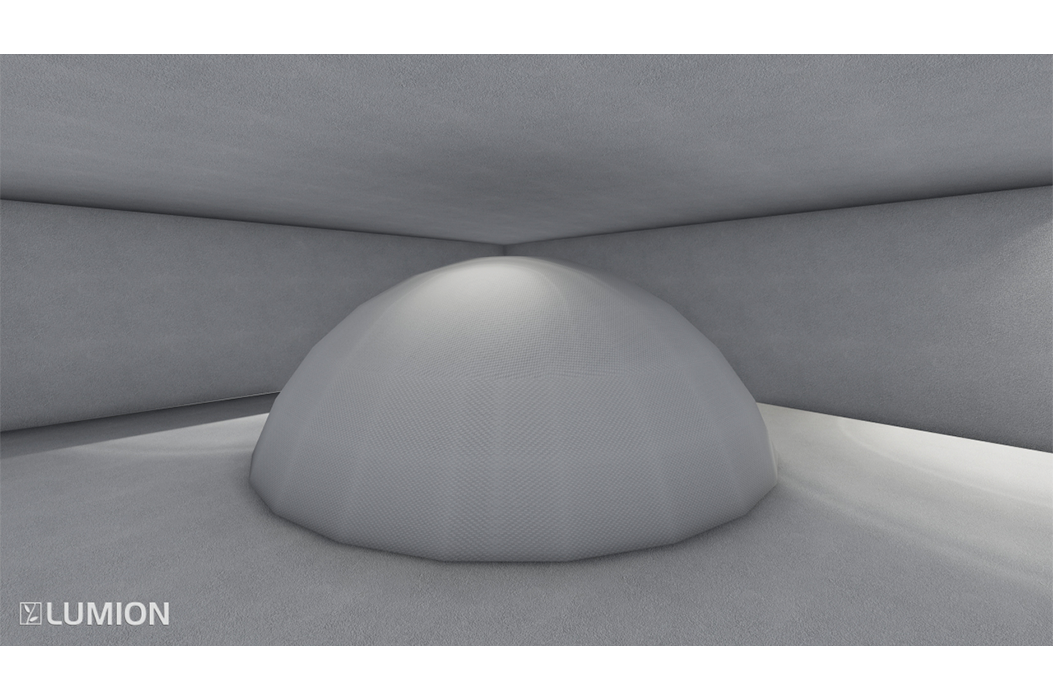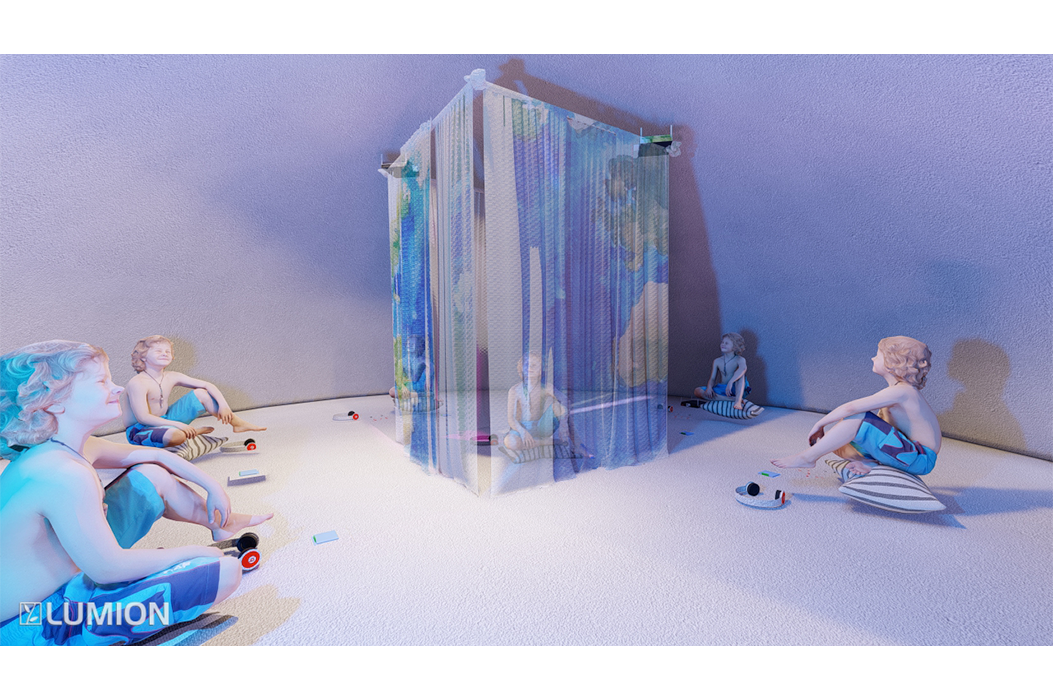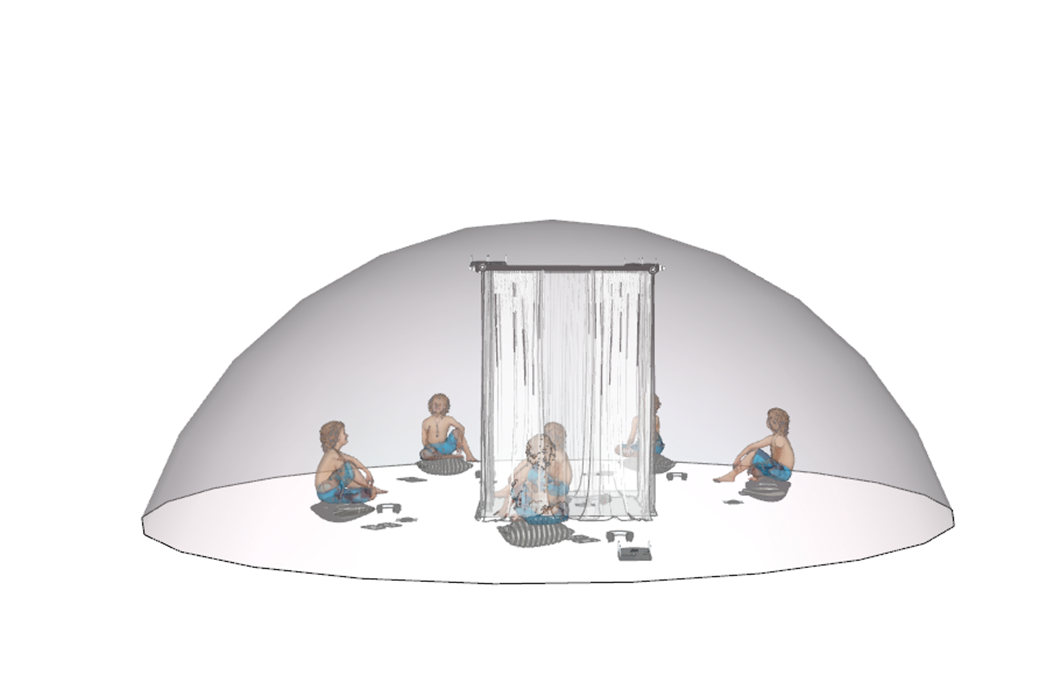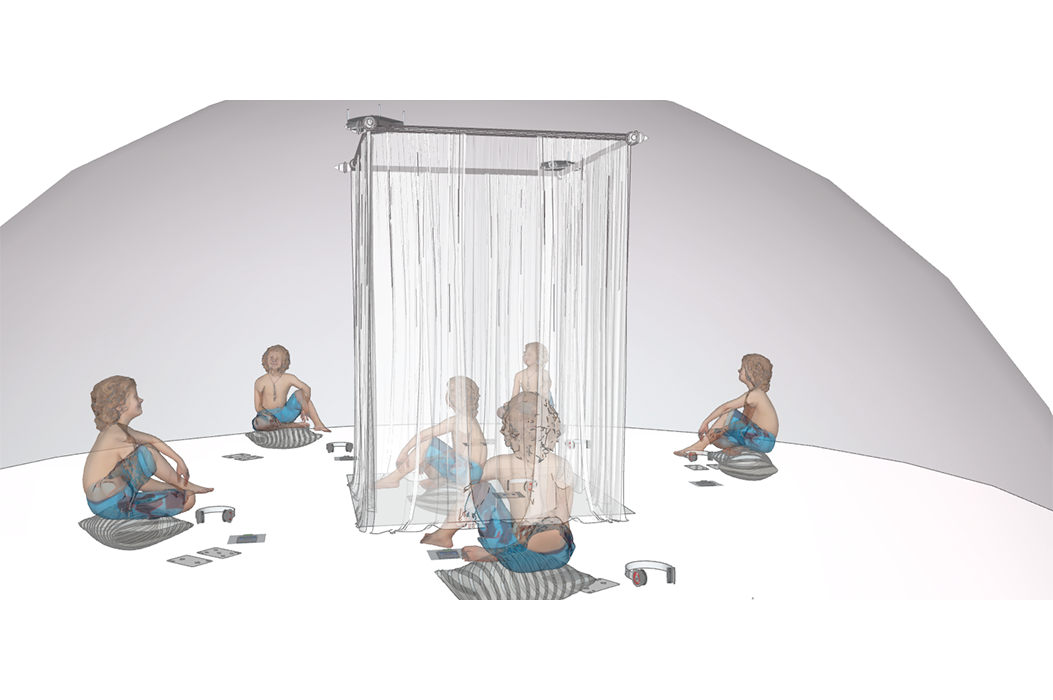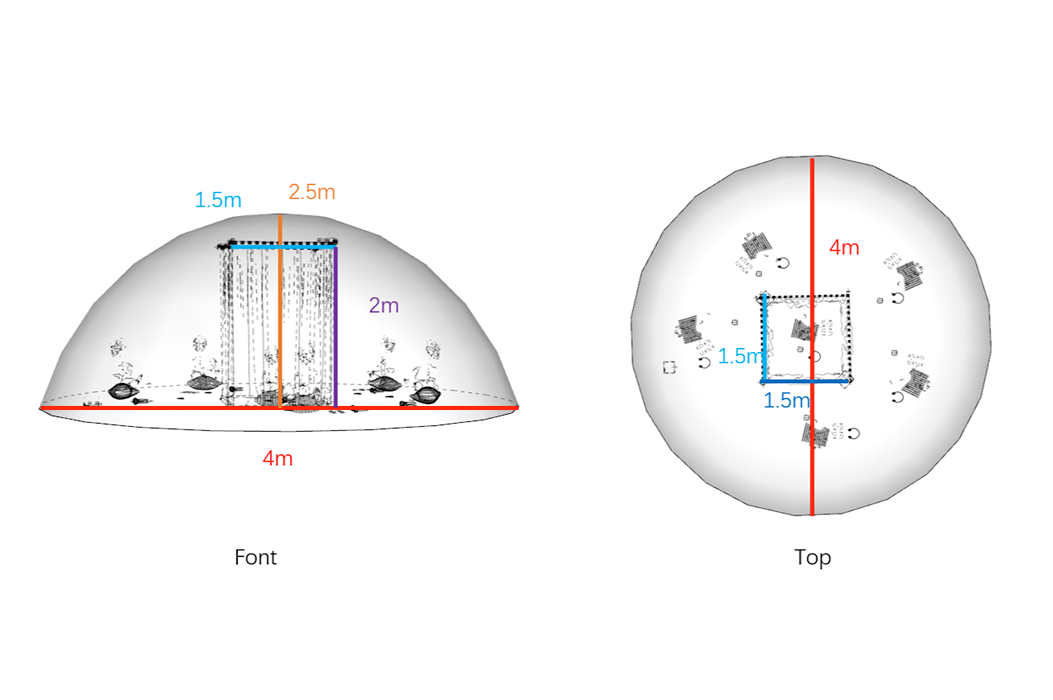Mingyue Chen, Annie Li, Henry Haoyu Wang, Leo Ji, RJ Sun, Marjorie Yang
2022 Undergraduate Research Fund Awardee
Interactive Media Arts Class of 2023
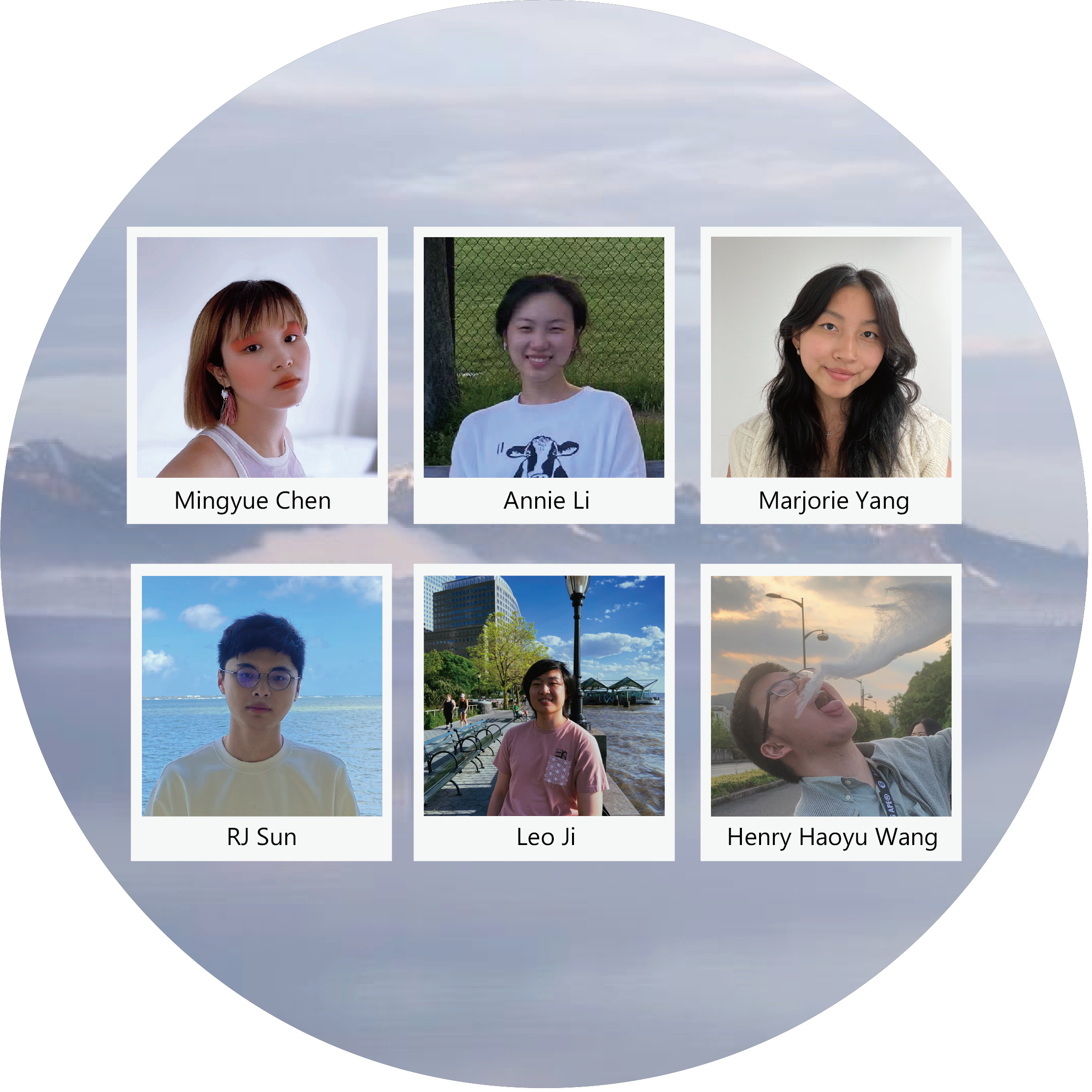
Mingyue Chen is a digital designer from Quanzhou. Her primary focus is tangible interaction design, where she seeks to harness the digital power to reshape people's relationships with physical objects.
Annie Li is an interdisciplinary media artist from Shanghai who explores the values of art in digital media. She enjoys discovering values from old things in order to use her skills in art and technology to make them vibrant.
Henry Haoyu Wang is an artist and a technologist based in New York, USA. His work has been exhibited and screened in Austria, Portugal, Mexico, China, Germany, and the United State. His current art focuses are data and bioethics, critical and speculative design, and mixed reality and visual storytelling.
RJ Sun is a data scientist from Chengdu, China who loves deriving insights and understanding interesting things through manipulating data and enjoys participating in various sports.
Marjorie Yang is an artist and environmentalist based in New York. Currently, she’s interested in how XR can allow us to embody nature and feel more connected to the physical world. She hopes to create meaningful artwork that informs and provides perspective.
Leo Ji is a game designer from Beijing. He likes to explore different ways players can interact with games, and how designers unnoticeably instruct their actions, with all those things happening in a fairly imaginary but trustworthy world.
PROJECT
Rising
The sea level of New York has risen 9 inches since 1950 due to global carbon emissions, and New York adds to global warming as the third-largest carbon emission city. In 2019, Mayor Bill de Blasio announced the Lower Manhattan Coastal Resiliency Project. At the beginning of 2022, Rutgers professor Jason Barr proposed an expansion of NYC, "New Mannahatta", as a single solution to cheaper NYC real estate and increasing issues of global warming-related climate threats. Our team envisions a recent future in New York where protecting the environment becomes a more crucial need for human beings to live.
Rising is a collaborative interactive experience based on real-world environmental crises. Our project includes scientific modeling, interactive installation, and card games. We build an installation with an animated projection where visuals are altered by New York's dynamic climate data. The audience engage with the projection by using a card game, in which the cards are the input for the installations' sensors. Then, the visual of the installation changes according to the sensor parameters. Through this interaction, we display to people directly how their daily actions accelerate the melting of icebergs.
The audience have different goals, and they play cards that can either benefit them personally or serve the common good. Individuals' choices build up to a huge factor that decide the ending of the experience. The main factor for determining the end of the experience is to make visitors realize that collaborations are necessary for saving our environment.
The production is based on our research on the environmental impact of carbon emission in New York State and Northern region. Our installation is separated into two sections, with one large section contains the smaller. The smaller section represents the area more vulnerable to climate change, and the larger one represents NYC, which is less directly affected by climate change. We install a projector for projecting effects of rising sea level due to carbon emission in an artistic way for the inner area. The installations' inner and outer spaces are separated using a half-transparent canvas.
The audience can play the game in the outer area. People in different sections are able to see each other's reactions to climate change. Furthermore, mats are provided on the floor for people to experience the installations and card games. We also have posters to promote our research on climate change in New York.
The takeaway from our project has two parts. First, people can get a basic understanding of environmental issues and see two decades of scientific prediction in New York and other regions. They can also see real-time climate change in our installation's visual presentations. Second, when people get involved in the game, they will face the dilemma of making decisions between protecting the environment and industrial development. Since it is a collaborative experience, the audience will know they need to work together to save the environment for themselves and the city.
